When traveling in a different culture, sometimes it’s the little things one doesn’t know that end up being the most surprising…and occasionally unnerving. In France, driving tends to be a breeze since the French conduisent (drive) on the right as we do, but there other situations or characteristics of French life that can be the opposite of American culture. I have pulled together a short list of these small cultural pièges (traps) that can make or break your time in France. Or simply knowing about them can make you more comfortable in the French environment. Read on to make sure you’re super savvy about these aspects of la culture française.
New Year’s cards – The French prefer to send New Year’s cards over Christmas cards. They like to wish their friends and family members bonne année et bonne santé (happy new year and good health) each year. So if you didn’t get a Christmas card from your French friends, not to worry. Hopefully that New Year’s card is on the way!
Numbers – You may have noticed that the French generally use commas rather than decimal points in their numbers. For example, when you see prices on restaurant menus, shop items and market goods, the ‘cents’ will be what follows the comma. This French bistro menu has les escargots at 7,50 euros for a half dozen or 11,50 euros for a dozen – garlic butter included!
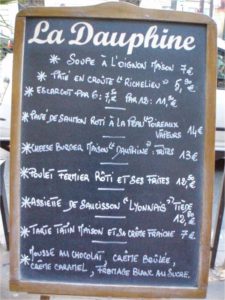
Also worth noting when you get to big numbers in the thousands and millions, the French indicate this with spaces while we use commas. In France, two million or 2,000,000 would be written as 2 000 000.
One other note, the French tend to cross their sevens so as to distinguish them from the number one. These big bouquets of luscious ranunculus were selling for 7,60 euros each.

Phone Numbers – In France, French phone numbers have 10 digits. The ‘area code’ consists of the first two numbers and the number pairs can be set off by periods or spaces. The French often write and say the numbers in groups of two, whereas Americans reel off their numbers in groups of 3, 3 and 4 – the area code, then the two parts of the 7-digit number. This sign at the legendary Château Margaux in the Bordeaux region indicates that tours of the winery are available by appointment only with the contact phone number provided.
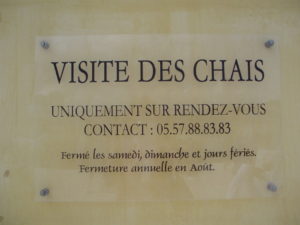
And French rose expert Elsie de Raedt opens her Loire Valley manor house and gardens to visitors, again by appointment only.

Abbreviations – The French have an interesting habit when it comes to abbreviations. If a shortened word contains the ending letters of the word, then no period is included. Alternatively, if the abbreviation cuts off the ending letters of the word, then a period shows up. Take a look at Madame, which is abbreviated Mme, versus Monsieur which ends up M. in its abbreviated form.
Bread – The French consider bread a true staple of life and eats LOTS of it. This is why there is a boulangerie (bakery) on nearly every street corner in France. On the other hand, Americans tend to equate bread with instant weight gain. I notice that Americans don’t touch the bread basket at restaurants, much to the consternation of the French wait staff.
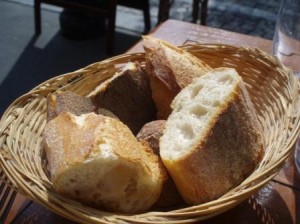
Coffee – At the end of French lunches and dinners, coffee – that would be expresso since the French put milk in their coffee only at breakfast – is served AFTER dessert. It’s almost like its own final course to the meal. So when the coffee you ordered does not arrive with your dessert, ne paniquez pas! It will come once you’ve finished your mousse au chocolat.
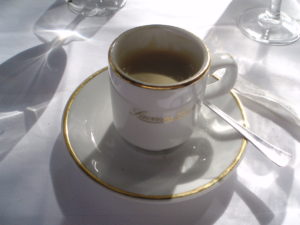
Tipping – In French restaurants, a tip of about 18% is built in to the price of items on the menu. So there is no need to tip another 15 to 20% at the end of the meal. In point of fact, when paying your restaurant bill by credit card, the French credit card slip usually will not include a space for tips. However, in return for good service, the French leave a good will gesture of some pocket change or small bills on the table – the rule of thumb is no more than 5% extra.
Books – Besides the language factor, French books differ from their American counterparts in two visible ways. First the titles on the spine (as the book cover is facing you) read from the bottom to the top in France; in the U.S., book titles read from the top to the bottom. So when you put French books on your bookshelf you have to decide if you want the front cover or the spine to align with the rest of your books?! Second, French books often have the table of contents at the end of the book rather than at the beginning. I am seeing more French books place it at the front nowadays but if you’re curious what’s in a book in France and can’t find the list of contents, check the back of the book.
Notebooks – Graph paper is de rigueur (essential) in French spiral and bound notebooks. Both French school kids and adults like the orderly ambiance graph paper provides – perhaps this is the key to their wonderful handwriting skills? Or maybe it’s the fountain pens everyone uses in France? In any case, Rhodia is the brand of choice when it comes to these graphic works of art.


Clocks and Time – Last but not least, the French regularly use the 24-hour or military clock to avoid any scheduling snafus – and the need to use AM or PM. Train schedules, airline flights, shop hours, restaurant reservations all function on the 24-hour clock. For example, shops in Paris tend to be open from 10h00 à 19h00 (10AM to 7PM).
And while on the subject of time, it’s very helpful to remember that in the U.S. daylight savings time starts earlier in the spring and changes back later in the fall as compared to France and the rest of Europe. So there is a two to three week period each season where the standard time differences between the U.S. and France are off by an hour. Good to note for your French travel schedule when time is of the essence!
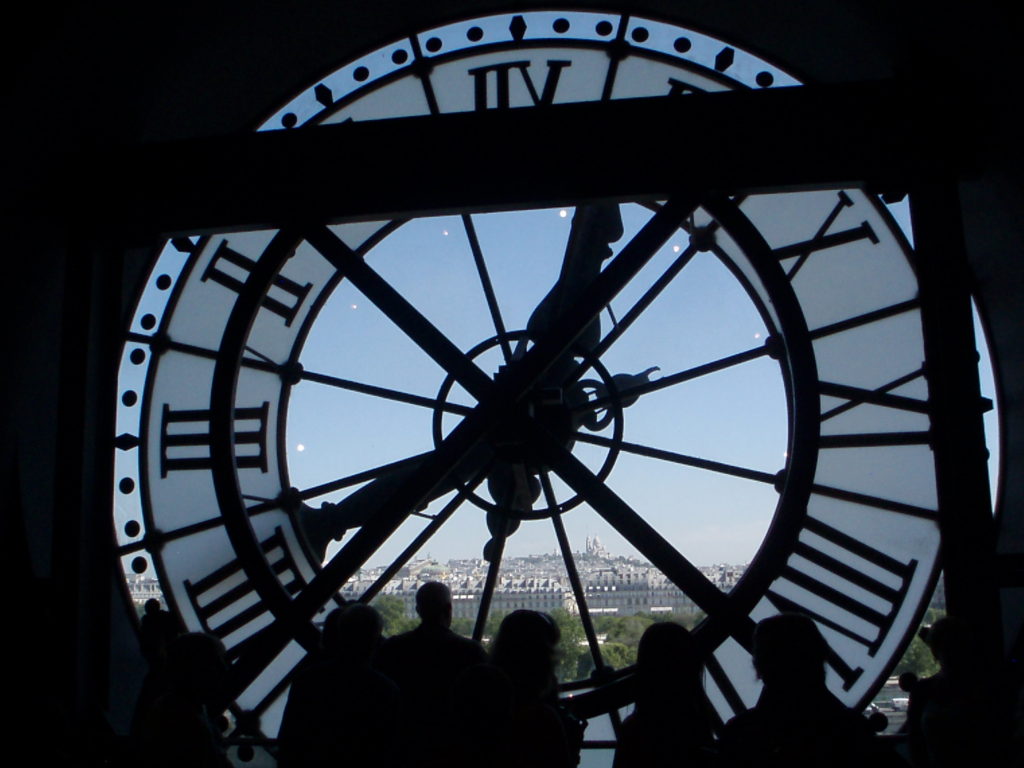
Step into French time with the big clock windows at Paris’s Musée d’Orsay